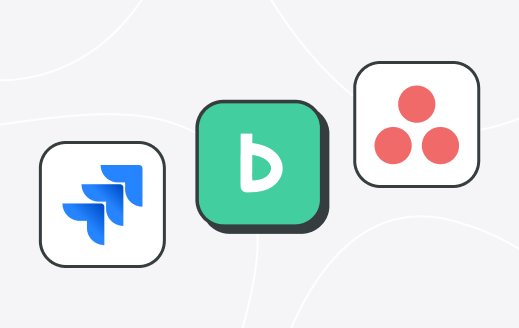Modernizing project management with limited IT resources
Brandi Gratis
October 31, 2025
Small and medium-sized businesses, non-profits, and operations-heavy teams often face a common challenge: modernizing project management while relying on limited IT support.
In this article, we’ll explore how traditional teams can adopt a reliable project management tool like Backlog, simplify workflows, and improve productivity—even when IT resources are scarce.
The challenges of limited IT support
Teams without dedicated IT departments often struggle with:
- Complex software that requires installation, configuration, or constant maintenance
- Time lost troubleshooting errors or setting up workflows
- Hesitation to adopt new tools due to fear of disruption
- Limited ability to provide training for non-technical staff
These challenges can slow down modernization efforts and leave teams reliant on spreadsheets and email.
Why Backlog works for teams with minimal IT resources
Backlog is designed for simplicity and ease of adoption:
- Cloud-based and low-maintenance
No server setup or complicated installation—teams can start immediately. - Intuitive interface
Task lists, Kanban boards, and Gantt charts are easy for non-technical users to understand. - Mobile and desktop access
Field workers and managers can access projects from anywhere. - Built-in support and resources
Help Center guides, tutorials, and customer support reduce reliance on IT. - Customizable workflows
Teams can tailor Backlog to fit their processes without coding or complex setups.
Step-by-step: Adopting Backlog with minimal IT support
- Start with a pilot project
Select one team or workflow to test Backlog. - Use templates
Backlog provides pre-built project templates to simplify setup. - Invite your team
Encourage staff to add tasks, comments, and attachments directly in Backlog. - Train using short walkthroughs
Use Backlog’s video tutorials instead of lengthy training sessions. - Monitor and iterate
Use the project homepage to spot bottlenecks and adjust workflows without IT involvement.
Real-world example: Choice Business Connections
Choice Business Connections, a small operations-focused company, faced challenges managing multiple client projects with limited IT support. Their reliance on spreadsheets and email led to missed deadlines and inefficient workflows.
Challenges they faced:
- Small team handling multiple projects without dedicated IT support
- Difficulty tracking tasks, deadlines, and project progress
- Inefficient communication relying on email and spreadsheets
How Backlog helped:
- Centralized all projects and tasks in a single workspace for real-time visibility
- Simplified task management with clear owners, due dates, and priorities
- Enabled comments, file attachments, and status updates directly in tasks, reducing back-and-forth emails
- Provided project overviews and automated notifications so leadership could monitor progress without micromanaging
Results:
- Increased efficiency and reduced project bottlenecks
- Improved team collaboration and accountability
- Leadership gained visibility into project progress without constant follow-ups
“Backlog has a superior interface, it’s easy to navigate, and there is no training required as it’s very intuitive.”
— James Yeomans, National Sales Engineering, Choice Business Connections
Read the full Choice Business Connections story →
Tips for success
Adopting a new project management tool with limited IT support can feel daunting, but small, practical steps make adoption smoother.
- Start with a pilot project
Focus on one team or workflow first. Identify a project with clear deliverables and a small number of participants. This helps demonstrate value without overwhelming staff. - Leverage templates and pre-built workflows
Backlog offers ready-to-use templates for common projects. Using these reduces setup time and ensures a consistent structure across tasks. - Keep task names clear and actionable
Write tasks with simple, descriptive names that indicate exactly what needs to be done. For example:- “Update inventory report for warehouse A”
- “Follow up with Client X on pending approvals”
- Assign ownership and deadlines from the start
Every task should have a clear owner and a realistic due date. This reduces confusion and ensures accountability without micromanagement. - Encourage consistent updates
Ask team members to update task status, add comments, or attach relevant files daily. This minimizes the need for repeated check-ins. - Use visual boards and charts
Kanban boards, Gantt charts, and Burndown charts help leadership quickly spot bottlenecks and monitor progress, even without technical expertise. - Automate notifications where possible
Set up alerts for new tasks, approaching deadlines, and status changes. This keeps the team aligned without IT intervention. - Train quickly, then iterate
Short walkthroughs or Help Center guides are often enough for initial adoption. Gather feedback, tweak workflows, and gradually introduce more features. - Celebrate small wins
Highlight early successes, like completing the pilot project on time or reducing email back-and-forth. Recognition motivates the team and reinforces tool adoption. - Regularly review and optimize workflows
Use the project homepage to identify overburdened team members, recurring issues, or bottlenecks. Adjust task assignments or workflows to improve efficiency.
The future of project management with limited IT resources
Managing projects doesn’t have to be IT-intensive. With Backlog, even teams with minimal technical support can modernize workflows, improve collaboration, and gain visibility into project progress.
Key benefits include:
- Centralized project management: All tasks, files, and updates live in one place, reducing reliance on spreadsheets and email.
- Clarity and accountability: Clear task ownership and deadlines ensure nothing falls through the cracks.
- Efficient collaboration: Comments, attachments, and status updates keep conversations connected to the work itself.
- Proactive oversight without micromanagement: Visual project charts and boards along with automated notifications allow leadership to monitor progress and address bottlenecks quickly.
- Support for remote and field teams: Desktop and mobile access keep all team members aligned, wherever they are.
Choice Business Connections demonstrated how a small team with limited IT resources can achieve smoother project management by centralizing work in Backlog. Their teams gained visibility, streamlined processes, and reduced stress, all without heavy technical support.
For traditional teams facing similar challenges, the path is clear: start small, use templates, empower your team with intuitive tools, and scale gradually. By taking these steps, even organizations with minimal IT resources can modernize project management confidently and efficiently.
Try Backlog for free today and simplify project management even with minimal IT support →


